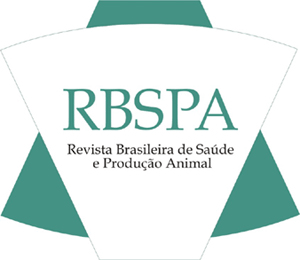ABSTRACT
The aim of the present study was to evaluate the ingestive behavior of sheep receiving alternative food with grape pomace to replace roughage, as well as its impacts on the rumen environment. It was observed that BU had higher TOC, TRAM and pH of the ruminal liquid, while there was less TRU (P < 0,05). As for the other parameters, no significant differences were found. In this study, just as the feeding time was not influenced due to the similarity of the concentrate: roughage ratio in the diet, the protozoan count did not change. This finding reinforces the possibility of using grape marc as a tool for formulating feed, reducing the risk of ruminal disturbances. It was observed that the group control had lower TRAM, indicating that the diet of this group promoted greater microbial activity and, consequently, greater digestibility, corroborating the already observed TOC. This result was the opposite of what was expected, since the grape pomace has probiotic properties, precisely because the fruits have more fungi and bacteria in their microbiota. This also confirms that the co-products of vitiviniculture can act as promoters of the intestinal health of ruminants, justifying further studies in order to improve this use. Therefore, the use of wine by-products is an alternative to reduce production costs, as its use in diets for confined sheep can improve the performance of the animals, increasing the total feed consumption and improving microbial activity.
Keywords: behavior; grape pomace; rumination; sustainability

 Subproduct of the Wine Industry to Replace Forage for Feeding Confined Ovine
Subproduct of the Wine Industry to Replace Forage for Feeding Confined Ovine Thumbnail
Thumbnail
